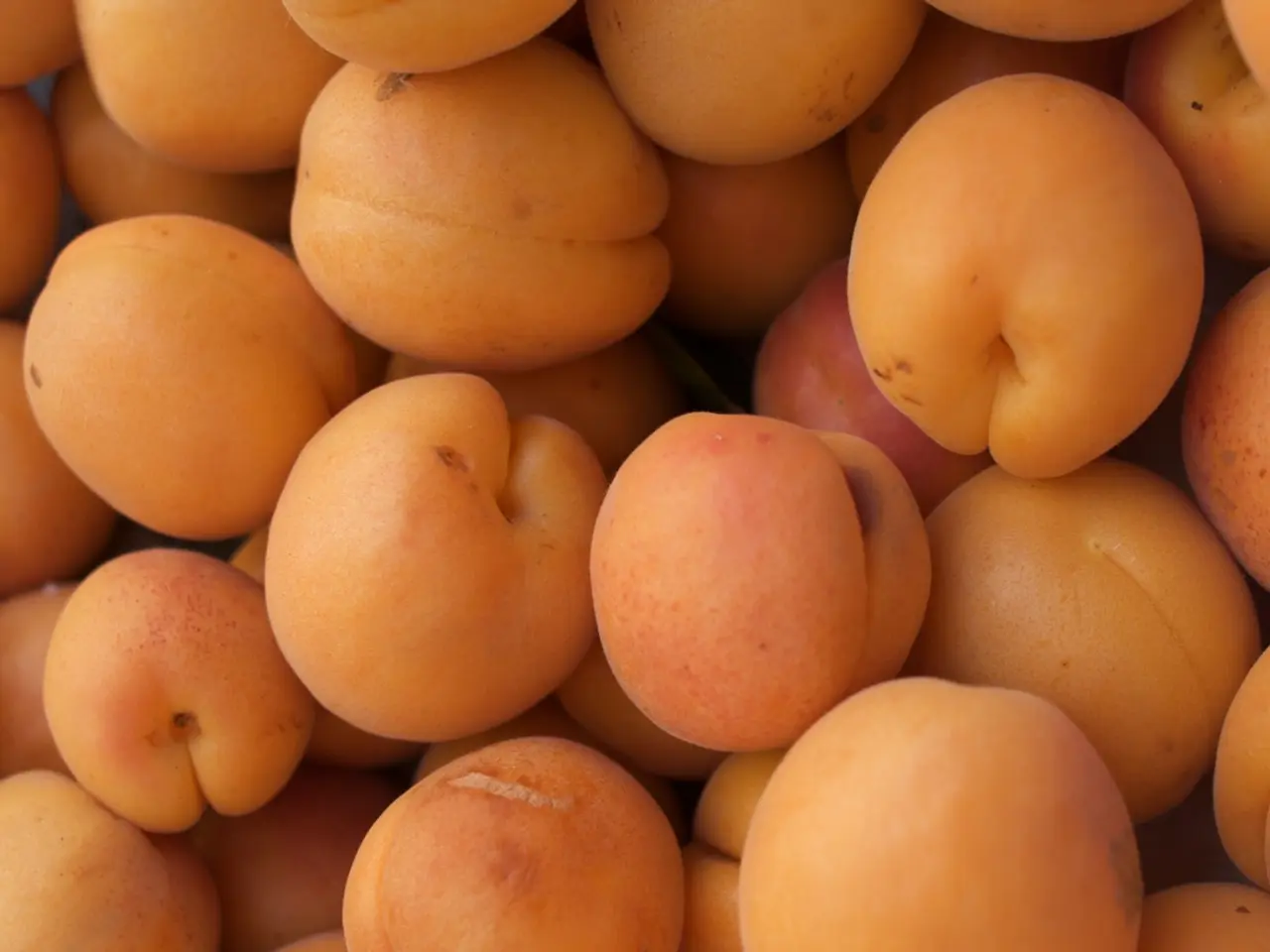Mandarin Orange: Advantages, Nutritional Facts, Preservation Guidelines
Mandarin oranges, a popular citrus fruit, are known for their sweet taste and easy-to-peel segments. This versatile fruit belongs to the botanical family Rutaceae and is cultivated worldwide, with numerous varieties offering unique characteristics.
These delightful fruits, which include tangelo and tangor as hybrids, are smaller and sweeter than common oranges. They can be stored in a cool place at 60-70 ̊F for up to a week, or in the refrigerator for longer storage.
One of the key benefits of mandarins lies in their nutritional profile. Rich in vitamin C, they provide 31% of an adult female’s daily requirement and 27% of a male’s requirement. Mandarins also contain antioxidants and anti-inflammatory compounds, which may help prevent some cancers and chronic diseases such as esophageal cancer and stroke among females.
Different varieties of mandarin oranges offer distinct tastes and textures. For instance, Satsuma (Miho Wase, Okitsu, Silverhill) is renowned for its easy-to-peel, seedless fruits with a sweet, mild flavor and thin rind. On the other hand, Murcott (Honey Mandarin) is juicy and sweet but often has seeds and a moderately tough peel.
Other notable varieties include Pixie, Shiranui (also called Dekopon or Topaz), Jeju Mandarins, Kishu Mandarins, Imperial Mandarin, Kara Mandarin, and various hybrid varieties like Tangelo Minneola and Tangelo Seminole.
Jeju and Kishu mandarins are particularly celebrated for their sweetness and ease of peeling, while Satsuma and Murcott are among the most widely grown commercial types. It's worth noting that the terms mandarin and tangerine are often used interchangeably, with tangerines being a type of mandarin.
Mandarins vary in color from bright orange to a deep reddish-orange. However, their thin skin makes them susceptible to punctures, so they must be handled with care.
Eating mandarins raw provides the most nutritional benefit, as cooking can destroy vitamin C. Mandarins are a tasty and healthy addition to any diet, especially for those at risk of vitamin C deficiency, such as smokers, those with malabsorption and chronic diseases, and those with limited food variety.
In conclusion, mandarin oranges offer a delightful range of flavors and textures, making them a popular choice for citrus lovers. Whether you prefer the sweetness of Satsuma or the unique tang of a hybrid variety, there's a mandarin to suit every taste.
- The nutritional profile of mandarin oranges, rich in vitamins and antioxidants, offers various health benefits, providing 31% of an adult female’s daily requirement of vitamin C and 27% for males.
- Different varieties of mandarins, such as Satsuma, Murcott, Jeju, Kishu, Pixie, Shiranui, Imperial, Kara, Tangelo Minneola, Tangelo Seminole, and various hybrids, offer distinct tastes and textures, with some being seedless, juicy, and easier to peel.
- Eating mandarins raw offers the most nutritional benefit, as cooking can destroy vitamin C, making them a tasty and healthy addition to any diet, especially for those at risk of vitamin C deficiency.
- Mandarins vary in color from bright orange to a deep reddish-orange, but their thin skin makes them susceptible to punctures, so they must be handled with care.
- Being popular citrus fruits, mandarin oranges can be found in a variety of health-and-wellness, food-and-drink, and lifestyle contexts, including recipes for healthy-cooking and fitness-and-exercise routines that emphasize nutrition.




